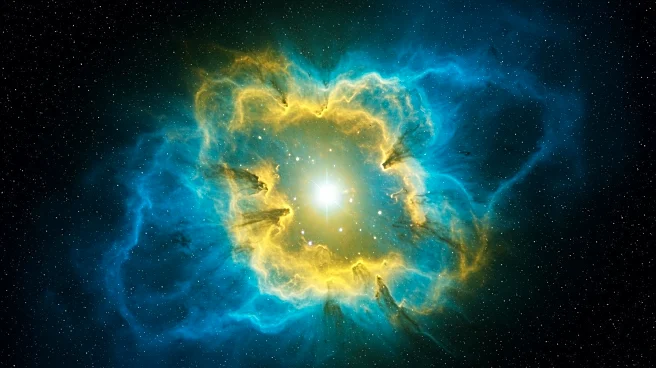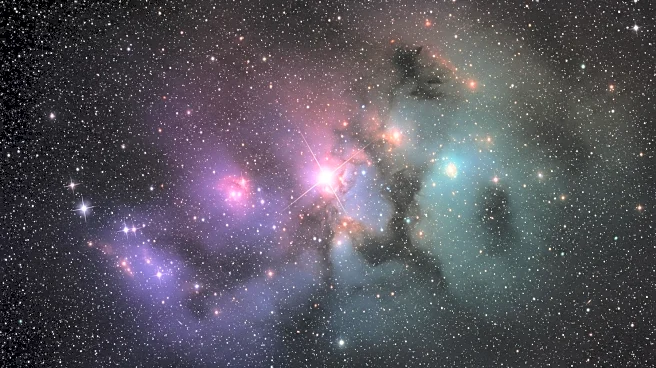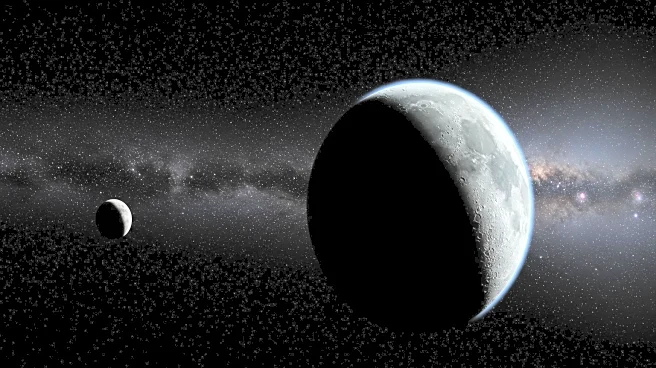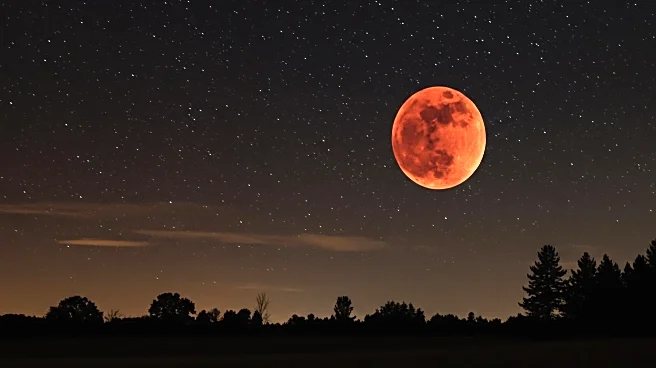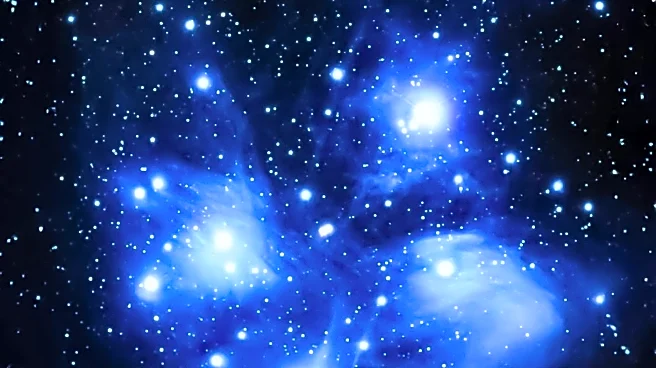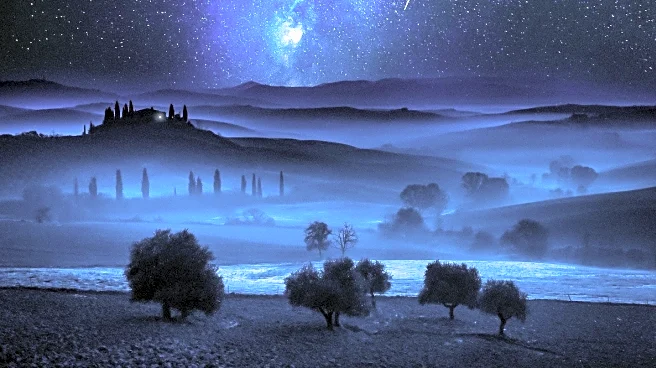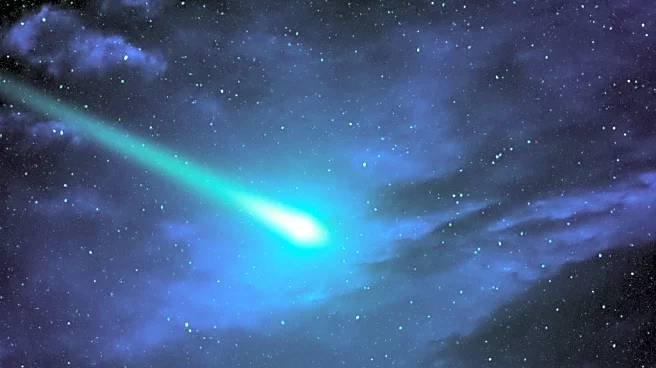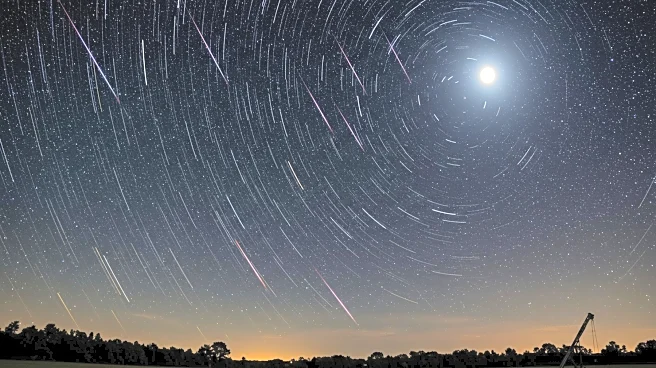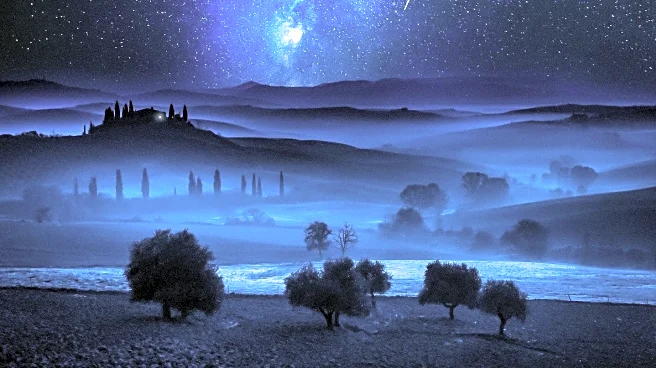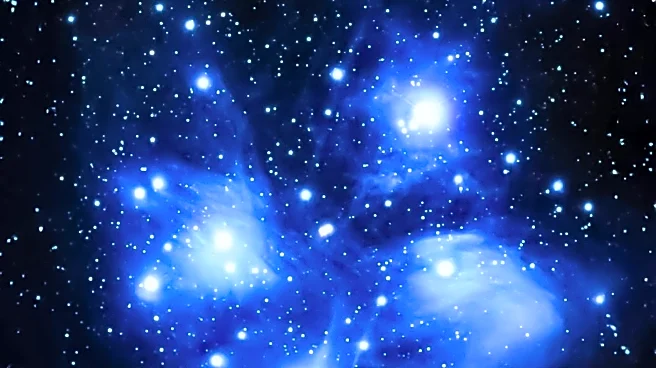What is the story about?
What's Happening?
Stars in the night sky can appear in various colors such as red, blue, yellow, and orange, but never green. This phenomenon is explained by the surface temperature of stars, which dictates their color. Blue stars are the hottest, with temperatures ranging from 10,000 to 50,000 Kelvin, while the sun, a yellow star, has a surface temperature of nearly 6,000 Kelvin. The Earth's atmosphere can affect the perceived color of stars, making the sun appear yellow despite its actual white color. Human eyes perceive color through light-sensitive cells called rods and cones, which respond differently to various wavelengths of light. Stars emit multiple wavelengths, and any star emitting mostly green light will also emit significant amounts of red and blue, resulting in a white appearance. Therefore, stars cannot appear green due to the way human eyes interpret color.
Why It's Important?
Understanding why stars never appear green is significant for both scientific and educational purposes. It highlights the interaction between astronomical phenomena and human perception, offering insights into how we interpret the universe. This knowledge is crucial for astronomers and educators in explaining the complexities of star colors and the limitations of human vision. It also underscores the importance of considering atmospheric effects when observing celestial bodies, which can impact scientific observations and public understanding of astronomy. The explanation of star colors can enhance public interest in astronomy and encourage further exploration of the night sky.
What's Next?
For those interested in observing colorful stars, it is recommended to avoid light pollution and use telescopes or binoculars to enhance the viewing experience. The best time to observe stars is during winter, when the skies often offer the brightest stars. This information can guide amateur astronomers and enthusiasts in planning their stargazing activities. Additionally, ongoing research in astronomy may continue to explore the interaction between star emissions and human perception, potentially leading to new discoveries about the universe and our place within it.
Beyond the Headlines
The inability to see green stars due to human perception raises interesting questions about the limitations of our senses and how they shape our understanding of the world. It touches on broader themes in science regarding the subjective nature of observation and the need for technological aids to expand our sensory capabilities. This phenomenon also invites reflection on the cultural and philosophical implications of how we perceive and interpret natural phenomena, influencing art, literature, and scientific inquiry.
AI Generated Content
Do you find this article useful?
